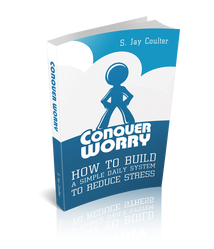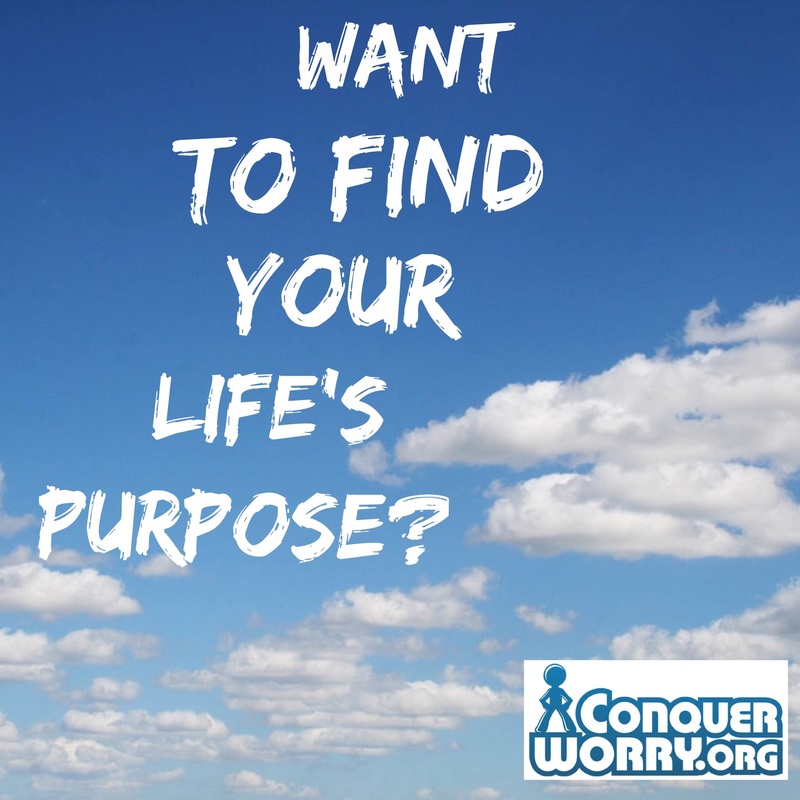|
Article by Brad Smith Edit and post design by Christy Zigweid Photo by thatsphotography via Pixabay made using @WordSwagApp Emotional support animals offer therapeutic and healing benefits to their owners/handlers by reducing symptoms of emotional or mental illness. An ESA can typically be a dog or cat, but there are many kinds of animals that may also qualify to be emotional support animals. Under American regulations, an ESA is not categorized as a service animal. So, if you pass off your ESA as a service animal, it is a federal offense. The American Pet Products Association reveals that more than 78 million American households own a pet. Emotional support animals play a crucial role in working with patients who are victims of depression, irrespective of their age, professional and cultural background. Over the last couple of decades, mental health professionals have been highlighting the importance and healing benefits of companionship. Research has shown that a solid relationship exists between improved outcomes within mood disorders, schizophrenia, bipolar disorder, schizoaffective disorder, and emotional support animals. The researchers at the New York State Psychiatric Institute discovered that keeping pets offers an opportunity to connect with nature in a unique way. Adults (sometimes children) who are combating the negative symptoms of depression and mental illnesses were found to improve their mental health with pets (often therapy animals), These animals helped boost self-confidence and mental health. How Does It Help?Being alone can be scary for people who are depressed or stressed out. Having a pet around helps them deal with loneliness issues easier as they have someone to take care of. All pets can be emotional support animals, provided they are safe for the patient and the people around him. Emotional support animals help to clear the minds of depression victims who may find it difficult to focus on a specific task. People who are struggling hard to emerge out of difficult situations believe that life is too hard and have issues trusting people. Nurturing and feeding a pet as well as touching your emotional support animals has soothing effects on a troubled mind. People learn to value themselves as there is someone who looks forward to them for support and love. Photo by JensEnemark via Pixabay Are You Allowed To Keep An ESA At Home?People who suffer from any kind of anxiety or depression are allowed to keep an emotional support animal (ESA) with them 24/7 even if their landlord has a ‘no pets’ policy. Medical experts have categorized emotional support animals as a companion animal that offers several healing benefits and eases several disability symptoms of your. Many people are still unaware of the fact that depression and anxiety are counted as disabilities. Under the Federal Fair Housing Amendments Act of 1988 and Rehabilitation Act of 1873, a landlord cannot discriminate against a disabled person in housing and has to make a reasonable accommodation, if required. Simply put, people who have a medical certificate or letter from their doctor that confirms the need for having an emotional support animal, your landlord must allow you to have a pet. If you're living in an apartment building which allows pets, you may still need to show your ESA information to the landlord so he does not charge you extra. Final ThoughtsAlthough cats and dogs have always been popular choices for emotional support animals, we have witnessed several unique animals qualifying for the role. It is not uncommon to see rabbits, pigs, goldfish, and even snakes to help people overcome their depression. If you want to keep a cat, make sure it is neutered and declawed. If it is a dog, choose a breed that is known for providing maximum love and affection. It might also be a good idea to register your ESA on an emotional support animal registry website or registry. About the AuthorBrad Smith is an avid animal lover who loves developing thought providing content for online readers. He currently writes for Therapy Pet - interact with them on their Facebook page.
3 Comments
Article by Matt Gonzales Edit and post design by Christy Zigweid Photo by lechenie-narkomanii via Pixabay made using @WordSwagApp Drug or alcohol addiction impacts lives. It can fracture a person’s relationships, affect his or her academic or job performance, and put the individual’s health at risk. Substance abuse can weaken a person’s immune system or cause seizures, stroke, or brain damage. Addiction can also lead to the development of mental illness, such as anxiety or depression. Mental diseases affect the way an individual thinks and his or her behavioral patterns. Some mental disorders, such as panic disorder, are rooted in anxiety. Other mental disorders, such as post-traumatic stress disorder, involve unwanted, intrusive thoughts. Nearly 44 million U.S. adults experience mental illness in a given year, according to the National Alliance on Mental Illness (NAMI). About 13.6 million adults in the United States live with a serious mental illness. According to NAMI: 18.1 percent of U.S. adults live with an anxiety disorder About 20 percent of Americans with an anxiety or mood disorder have a substance use disorder, according to the Anxiety and Depression Association of America. Conversely, about 20 percent of those with addiction have an anxiety or mood disorder. Mental disorders can lead to drug or alcohol addiction, as well. Men are more likely than women to develop a co-occurring disorder. People of lower socioeconomic status, military veterans, and individuals with general medical illnesses are also at risk for developing a co-occurring disorder. People with mental illness often use drugs or alcohol to self-medicate. However, substance abuse can worsen symptoms of mental illness and trigger new symptoms. Self-medication can also lead to addiction. A 2010 study published in the journal Current Drug Safety outlined the consequences of self-medication. Individuals who self-medicate may self-diagnose incorrectly, fail to seek medical help, or take a dangerous amount of the substance. People self-medicate using drugs or alcohol to numb physical or emotional pain. For example, someone with anxiety may discover that a few drinks and some marijuana take the edge off in social situations. But the more an individual uses these substances to manage stress, the less able he or she is to cope in healthy ways. Substance abuse is common among people with social anxiety disorder, a mental illness characterized by an extreme fear of being scrutinized or judged in social or performance situations. Drinking in social situations may reduce anxiety, but it can also result in alcohol abuse. PTSD and substance abuse also frequently occur together. People with PTSD often use drugs or alcohol to alleviate emotional pain. However, these substances have shown to worsen PTSD symptoms. Many mental health professionals treat PTSD and substance abuse together because symptoms of this mental illness can lead to relapse. Those with co-occurring disorders should seek treatment immediately. Rehab centers across the United States offer a continuum of care catered to each individual’s needs. People who have completed treatment and are in recovery go on to live healthy lives while maintaining successful careers. SourcesAnxiety and Depression Association of America. (2016, June). Social Anxiety Disorder. Retrieved from https://www.adaa.org/understanding-anxiety/social-anxiety-disorder Anxiety and Depression Association of America. (n.d.). Substance Use Disorders. Retrieved from https://www.adaa.org/understanding-anxiety/related-illnesses/substance-abuse Dayton, T. (2013, July 9). Why We ‘Self-Medicate’ Our Own Depression or Anxiety. Retrieved from http://www.huffingtonpost.com/dr-tian-dayton/self-medication_b_3236724.html National Alliance on Mental Illness. (n.d.). Dual Diagnosis. Retrieved from http://www.nami.org/Learn-More/Mental-Health-Conditions/Related-Conditions/Dual-Diagnosis National Alliance on Mental Illness. (n.d.). Drugs, Alcohol and Smoking. Retrieved from http://www.nami.org/Find-Support/Living-with-a-Mental-Health-Condition/Taking-Care-of-Your-Body/Drugs,-Alcohol-Smoking National Alliance on Mental Illness. (n.d.). Mental Health Facts In America. Retrieved from https://www.nami.org/getattachment/Learn-More/Mental-Health-By-the-Numbers/General-MH-Facts-4-12-15.pdf National Council on Alcoholism and Drug Dependence Inc. (2015, July 25). Alcoholism, Drug Dependence and Co-Occurring Disorders. Retrieved from https://www.ncadd.org/about-addiction/signs-and-symptoms/co-occurring-disorders Ruiz, M.E. (2010, October). Risks of self-medication practices. Retrieved from https://www.ncbi.nlm.nih.gov/pubmed/20615179 Substance Abuse and Mental Health Services Administration. (2016, March 8). Mental and Substance Use Disorders. Retrieved from http://www.samhsa.gov/disorders About the AuthorMatt Gonzales is a writer and researcher for DrugRehab.com. He boasts several years of experience writing for a daily publication, multiple weekly journals, a quarterly magazine and various online platforms. He has a bachelor’s degree in communication, with a Journalism concentration, from East Carolina University. Follow him on Twitter.
Article by Irving Schattner Edit and post design by Christy Zigweid Photo by PixArc via Pixabay made using @WordSwagApp Too often, people take mistakes as a sign of personal failure. This core belief often comes from messages acquired from family of origin during one's formative years, as well as traumatic or distressing experiences. One then carries these messages through later life, impacting our thoughts, beliefs and behaviors. Coming to define our self-concept and worldview, messages acquired in earlier years may no longer be relevant or adaptive towards healthy functioning in the roles we carry as adults. So, in our adulthood, continuing to hold on to outdated messages leaves us developmentally stunted and, therefore, incapable of handling the stressors and challenges of daily living. Healing comes through the awareness that messages acquired in earlier years (our “inner child”) don't serve us in later life, and acquiring the skills to actively challenge negative thought patterns and self-sabotaging behaviors. For many of you this is a most daunting task for which you feel ill-equipped, leading you to give up before trying. Others will make minimal progress in applying knowledge acquired through the internet, self-help materials, or even through well-meaning but untrained mental health professionals, only to slip back into old patterns which reinforce anxiety, worry, frustration, depression, and low self-esteem. Photo by TambiraPhotography via Pixabay There is Help...Like many of you, I used to suffer with severe anxiety. My anxiety originated with the messages I acquired early in life, carrying me into adulthood. Like many of you, these negative messages zapped my energy, deprived me of the courage to take advantage of opportunities that came my way, and kept me in a continual cycle of worry and despair from which I could not see my way out. That was until I finally mustered the courage to seek professional help. In doing so, I literally changed my life for the better. I had a mentor who lead by example, one who understood what it was like to live with anxiety, yet mustered the courage and resolve to change. One who made me aware of how my negative messages came to be. One who showed me how to actively challenge (dispute) these messages and replace them with more realistic, truthful and supportive statements. One who made me aware how negative thought patterns led to self-sabotaging behaviors (including avoidance). To my mentor, I am eternally grateful, for I now live with joy, purpose and direction. Through my own journey, I learned not to fear anxiety but actively face it, talk back to it, challenge it, and channel it. My mission, as a psychotherapist who specializes in treating anxiety and depression, is to help other anxiety and depression sufferers achieve the freedom which I’ve come to know. About the Author - Irving Schattner, LCSW
Guest Post by Two Wise Chicks Post Design by Christy Zigweid Photo by Myriams-Fotos via Pixabay made using @WordSwagApp We've been meaning to talk about guilt for some time now. Guilt is a feeling that is familiar to most of us - some more than others of course. And it's something that comes up in our own lives, and with clients. But can it be a good thing to experience guilty feelings? Well...yes and no. On the positive side, guilt can be a way of keeping ourselves in check, a moral compass if you will. It alerts us to the possibility that our behaviour is poor, unkind, even cruel or abusive. Guilt is our gut-check, the internal compass that lets us know it is time to make amends. But what if we feel guilt even when we've done nothing technically wrong? What if we are so accustomed to feeling guilty that we don't even check to see if it's the correct feeling for the situation? Photo courtesy of Two Wise Chicks The list of potential "Guilt Trips" we can take ourselves on is endless:
We think 'Toxic Guilt' should come with a health warning!Guilt keeps us in VICTIM MODE. For example, after getting a sub-par meal, we might say to ourselves 'Oh I couldn't complain to the staff about that... I'd feel so GUILTY!' Telling ourselves we'd feel guilty allows us to dodge responsibility - and keeps us stuck well within our dubious 'Comfort Zone.' Guilt keeps us stuck. It causes us to do things we don't really want to - or not do things we might enjoy - for fear of imagined rejection or judgement. By allowing guilt to go unchecked in our lives, we cheat ourselves out of reaching our potential, and we miss opportunities for joy and fulfillment. For us, the simplest way to erase unnecessary guilt from our lives is to ask ourselves the question: "Have I just done something that's actually wrong?" If we haven't, then our guilt is undeserved, unnecessary and pointless. There is no learning to be gained from it. Just pain. So we can choose to let it go. Side note: We would benefit from identifying what we are REALLY FEELING in these situations. Maybe it's insecurity. Maybe it's shame. Maybe it's fear. Whatever it is, it is NOT guilt. What better time than now to end this tradition of guilt. Instead, let's start a new tradition of responsibility and self-care. Imagine the freedom?!! With guilt-free love, About the Authors Sally O’Reilly
Sally wants to help create a world of compassion for ourselves and others. A world where mistakes are allowed, gender roles don’t exist, sex ed in schools is a real thing and everyone dances – lovely! As a psychologist and psychotherapist in Ireland, she’s worked for nearly twenty years in private practice, with adults and trainee adults of all ages. She blogs on her own website, is a feature writer for super duper parenting website Voiceboks.com, does print and radio media work and has been known to Tweet. She’s the one running our Twitter page! When she’s not working, you will find her engrossed in Science Fiction or some dark and Danish TV show, listening to music, watching the sea (while really, really wishing it were warmer), or figuring out how to work Lightroom on her Mac. All while munching on Bombay mix. #multitasker! She’s happiest when dancing and erm…. her cat has his own Facebook page. We won’t link to that, it’s too embarrassing.. Tanya Tinney Tanya looks forward to living in a world where people know their worth, respect boundaries, and always have time for tea and chocolate. A magic bubble that protects her from sticky fingers, hormonal girls and dog hair would be awesome as well. Her education and much of her training is in the areas of psychology and human potential. She worked as a licensed psychologist for over 14 years, with 10 of those years spent building her own successful private practice. In total, she has over 20 years of varied experience working, volunteering for non-profit agencies, and consulting to small business. Most recently she has launched her dream online coaching practice where she gets to work with motivated, amazing women who need help overcoming life’s hurdles. Exciting times! She has lived in Ireland, Ethiopia (okay, just 6 months), Canada, and currently lives in central Texas with her husband, three girls (including fraternal twins), two dogs and three cats. When she’s not finding ‘everyday moments’ to write about here or on her own blog, you can find her being walked by her dogs, unearthing unidentifiable food-objects under the couch cushions or baking her famous banana bread. Tanya runs our Facebook page – and not to be outdone by Sally’s cat, her dog has its own Facebook page too. Article by Irving Schattner Edit and post design by Christy Zigweid Photo by Unsplash via Pixabay made using @WordSwagApp Our brains are constantly working. Neurons are firing and chemicals are released and absorbed, leading to thoughts, emotions, and actions. Whether we are in a state of motion, standing still or sleeping, our brains accommodate to ever-changing circumstances and states of consciousness. As much as we may try to convince ourselves of the need to slow down the process of brain function, there are elements of biology and conditioning that dictate the flow of energy circulating up the spine into our brain and down to our organs. That is a given. What is less of a given is the extent to which we can exercise control over our brain and, therefore, bodily organs. The extent to which we are able to exert conscious control over mind and body can be dictated by a number of factors. One factor is how aware we are of what we think and feel. It is through conscious awareness that we can begin to gain some mastery over how we channel our thoughts, emotions, and actions. “Failure to be aware” leads to automatic thoughts, feelings, and actions that may be counterproductive to our goals. While this may seem an obvious conclusion, many people in distress often find themselves “stuck” in the very patterns which perpetuate and even exacerbate the problems from which they seek freedom. For some in distress, it is more comfortable to accept one’s fate than to examine what influences and motivations keep them from seeking change and joy. Admittedly it is a daunting task to examine that which is hidden from consciousness, and break through the defense mechanisms often used as self-protection. To engage in a process of self-awareness can begin the process of change. If we continue to ignore or avoid what has been brought to our consciousness, we perpetuate self-sabotage. Some believe that motivation is what is needed and continue to wait for motivation that never comes. The stark reality is that motivation is usually achieved by the mere act of doing. The act of doing, or being, may seem at times like an uphill battle, but once undertaken becomes a process through which motivation is reinforced. In other words, one can sit idly by and think about taking action, or one can learn through repeated attempts (trial and error) until success is achieved. Success is best achieved when fear of failure is challenged through opportunities for learning made possible by taking action. By taking action, assessing what went right and what needs to be modified or corrected, one is on the path to adaptive change. Unfortunately, having gained conscious awareness (or understanding), many people in distress often recoil into typical patterns of thinking and behaviors which further reinforce their negative self-image and disbelief in their ability to gain mastery over their distress. The fortunate few, often with the guidance, support, and encouragement of a well-trained mental health professional, are determined to undertake this next phase of action which flows from their newly-discovered awareness. It is my wish for each one of you that you take the necessary steps to move from awareness to action, in order to achieve a life of joy, purpose, and direction. Show the courage to change. Reach out and give me a call so we can explore taking this journey together. The rewards are fantastic! About the Author - Irving Schattner, LCSW
Article by Irving Schattner Edit and post design by Christy Zigweid Photo by Silentpilot via Pixabay made using @WordSwagApp As we head into a new year, I am reminded of how many people are out there needlessly suffering with anxiety and depression. I also ask myself why so many people are willing to “settle” when their lives could be so much better; filled with joy, purpose and direction. As I ponder this question, I am reminded of my own experience with anxiety and the years it “stole” from me; how it zapped my energy, denying me simple pleasures of life and forcing me to pass on opportunities that could have enriched my life. I remember an old television commercial from the United Negro College Fund stating how “a mind is a terrible thing to waste,” I reflect back on my own negative state of mind and how it colored a distorted lens through which I viewed myself and the world around me. My negative state of being easily led to feelings of frustration, anger, suspicion and, at times, hopelessness and despair. Yes, there were good times, but even the good times were short-lived, as anxiety and its aftermath would once again take hold and bring me back to my reality. And so, because I struggled with anxiety and feelings of sadness, hopelessness and despair, I contemplated the value of my worth which translated into a poor sense of self. Feeling somewhat lost and disconnected led me to feel sorry for myself and so rather than take action to do something to manage and overcome my negative emotional state, I continued to daydream about what my life could be like. I was living without a sense of real joy, purpose, or connection with myself and the world around me. It was hard for me to imagine anything other than how lousy I felt. Although I made my mark on some occasions and went through the motions on other occasions, I continued to feel unfulfilled and ridden with anticipatory and situational anxiety. Unrealistically high expectations, a need to be perfect, possessing a strong need for approval, and fearing negative evaluation were the by-products of my anticipatory and social / situational anxiety. Seeing no way out, there were times when I pondered my miserable existence by entertaining thoughts of departing from this Earth. Fortunately, for me, these were only thoughts as I had no plans of acting on them. Realizing that doing myself in was a one-way trip with no return, I continued to hold out some hope that one day I would overcome my anxiety and live with joy, purpose and connection. Fortunately for me, that day came. I saw an ad in the local newspaper (this was many years ago before there were computers or the internet) advertising a group for persons suffering with anxiety and depression. Of course, as fear was typically my guide, I came up with a number of reasons why I couldn’t attend:
Despite all these excuses, I finally decided that despite my suspicion and ambivalence about how the group could be of help, I would give it a shot and go. Photo by vait_mcright via Pixabay So, I showed up to group about a half-hour earlier in order to ease myself into this potentially terrifying situation. The last thing I wanted to do was walk in and have all eyes upon me. As each new member showed up, I said “hello” and introduced myself in an attempt to desensitize myself from the anxiety of what was yet to come. When all the members filed in, and the group room door was closed, I felt a wave of intense panic overcome me. My immediate thoughts were “What the hell am I doing here?" followed by “What if they notice how nervous I am?” and “What if I feel the need to walk out and leave?” It was a living hell on Earth. Despite my intense fear and anxiety, I did stay (probably because I was too embarrassed to draw attention to leaving) and somehow muddled through. Sitting in a group filled with fellow anxiety suffers, my thoughts were focused on how “together” many of the members appeared and how out of place I felt. I was going through the motions while frozen with fear. I listened to people share and when it was my turn, I shared very little and was quite general and superficial. In what seemed like an out-of-body experience, I listened to what others had to share while very much preoccupied with my own internal state of mind and physiological state. When the group adjourned for the evening, I felt relief, said goodbye, got into my car, and went home. On the way home, my anxiety eventually diminished while my evaluative self remained. Despite my success at attending the anxiety group, my anticipatory anxiety persisted as I continued to ponder reasons for not returning to next week’s group. The closer I got to the day of the next group, the stronger these negative feelings were. Despite my excuses and negative frame of mind, I went back to group the following week, followed by the next week and the week following that, and so on. With each meeting, I shared more and came to realize that no one was judging me; I was the only one doing the judging. And...over time, my comfort level with group increased. I came to realize that despite our different life experiences, we all shared the burden of living with anxiety and were all committed to finding freedom through mutual aid and support. Photo by rebeccaread via Pixabay Attending the anxiety group was a turning point in my life. It led me to pursue individual therapy, where I unraveled the mystery behind what was fueling my anxiety and learned healthy strategies for finding joy, purpose and direction. My most important lesson in therapy was learning that despite my worst fears and scenarios, my anxiety would not kill me. I came to realize that the more I tried to hold onto or “control my anxiety,” the more my anxiety controlled me. (This is known as a “paradox,” which involves doing the opposite of what your brain is telling you to do). And so, despite my initial resistance, with support, encouragement, and even prodding by my therapist, I began to allow myself to feel that which I feared most – my anxiety. At first it was scary as hell. My therapist was asking me to do the very thing I was avoiding, facing my anxiety and allowing it to pass through me while continuing to do whatever I was doing. But with repeated practice, my anxiety came to diminish in intensity, as I allowed myself to “face it, feel it, and let it pass through.” Through this process of walking through my anxiety, I came to the realization that fighting my anxiety was futile, and learning to accept (rather than fear) what I was feeling was my answer to gaining freedom from anxiety. In telling my personal story, my wish is for you to reach out and seek help. If I can do it, so can you. It takes some courage and persistence, but the payoff is tremendous. Since my recovery from anxiety, my life has only gotten better. Yes, like most people, I still feel anxiety from time to time, but it no longer throws me into a panic. I now see my anxiety as a way of letting me know that something is troubling me and use the skills learned in therapy to channel this anxiety for positive change. And… as a licensed clinical social worker / psychotherapist, I’ve taken what I’ve learned (both personally and professionally) into helping others achieve freedom from anxiety and depression. Take the challenge… step out of your comfort zone, attend a support group and seek professional help for your anxiety and depression. Warm regards, Irving Schattner, LCSW About the Author - Irving Schattner, LCSW
Guest post by Irving Schattner Edit and post design by Christy Zigweid Photo by PublicDomainPIctures via Pixabay created using @WordSwagApp For many people suffering from anxiety or depression, the Holiday season and New Year can be a difficult time. Unrealistic expectations or commitments, family connection or disconnection, social isolation, financial problems, grief and loss, geographic change, and less sunlight can lead to stress, anxiety, sadness, and depression. Headaches and body aches, over-eating, excessive spending, and insomnia are a few ways in which the inability to cope with the holiday blues can manifest themselves. During such times, it is important to develop a plan of action to head off or derail the effects of the holiday blues. If untreated, they can last way beyond the holiday season and into the New Year. For some people, increased social support can be of great benefit. This may include connecting with old friends or family members. Facebook and other social media, as well as the old-fashioned phone call are tried and true methods. The meetup.com site is a great way to connect with people who share your interests. Counseling and support groups are other ways of self-exploration and learning to connect with the world outside of yourself. For people suffering with season affective disorder (SAD), which is associated with shorter days of sunlight, increased exposure to the outdoors as well as phototherapy 30 minutes daily (25 times as bright as normal lighting), can help increase feelings of well-being. Photo by PublicDomainPictures via Pixabay While for some the holiday season means good, happy times with friends and family, for many people it represents a time of sadness, debilitating self-reflection, loneliness, and anxiety, resulting in fatigue, unrealistic expectations, financial pressures, and commercial expectation to go out and spend money. Too often they are plagued with unfulfilled goals and focus on what’s not right in their lives. The demand to conform to external expectations of what it means to be in the holiday spirit may contradict one’s actual life experience. This leads to internal conflict, somatic ailments, and psychological and emotional distress. Risk factors for stress, anxiety, and depression include, but are not limited to: lack of adequate social support, recent or past trauma, life changes, substance abuse, balancing the demands and expectations of family vs. setting appropriate limits or boundaries, house guests whose presence creates increased tension, and insomnia or isolation. Photo by CC0 Public Domain via Pixabay Tips for managing holiday stress
About the Author - Irving Schattner, LCSW
As a little girl, I was a worrier. I worried about silly things like spiders in my bed, aliens living next door, whether my friends liked me, and what to wear to school. As I grew, so did my worries. Boyfriends and jobs, teachers and classes, filled my thoughts, the normal concerns of any young girl. But there were other worries that consumed me, like a brother who ran away, and another who clung to me when parents fought. I worried about our parents, and whether their worries would tear them apart. I worried myself into teenage anorexia, which became my coping mechanism for dealing with stress. As a teen, I was expected to fit in, eat with my friends, and munch on snacks all day long, which made me eventually give up anorexia, and worry about my weight. Every time I thought about my weight, I exercised, twirled my hair, fidgeted in my chair, and clicked my fingers, my new ways of dealing with anxiety. Photo by mojzagrebinfo via Pixabay I worried so much, I was often sick, sometimes for a month at a time. I missed school, and wondered if I’d get my work done, or even pass my grade. I worried about the flu and colds I often developed, unexplained fevers, and sores that covered the inside of my mouth. By adulthood, I was a flustered, stressed-out, overthinking mess. Only by now, I was getting better at hiding my worries. I hid them behind too much work and fussing constantly in my home. I disguised my worries in sleepless nights. No one, not my children, parents, or husband, knew the constant brooding in my head. I guess you could say, in some strange way, I had control over my worries. Only I didn’t. A few years ago, they all came tumbling out. As my husband and I sat in our car, waiting to turn into a tiny fruit stand, another vehicle rammed into us. I don’t remember the crush of metal against metal, or my brain being flung from one side of my skull to another. What I do remember is standing on the side of the road after the accident, and panicking. Heart-thumping, body-shaking, sweat-dripping, panic. In one brief second, the only control I’d ever had over my worries, was gone, and there was nothing I could do. And to this day, I still have problems controlling my panic. Photo by Alexas_Fotos via Pixabay Recently, a string of events, some unforeseen, some planned, sent me over the proverbial edge. In less than two months, three sets of guests stayed overnight, my husband lost one job and gained another, we went on an out-of-state trip, I was called to jury duty, and I experienced a health scare. To top it off, my children were experiencing their own sets of problems, and though they are adults, I still worried. I worried about everyone those few months: My guests, whether they were happy, comfortable, and having fun; my husband, his old job, his new job, his salary, his benefits. I worried about my children, and their futures. I even found time to worry about a brother who was moving away. It wasn’t unusual for me to worry, but now, my worries were different. I no longer knew how to control them. I no longer knew how to hide behind daily activities. Those two months were filled with a shaking body, constant tears, and a temper that flared for no reason. When it was over, I’d fall in bed, confused, and exhausted beyond belief. Other things had changed in me as well. Worry wasn’t just a part of my life, it consumed me. So much, I’d forget to eat, nap, and exercise. In other words, I’d forget about me. It wasn’t until I received the envelope from the courthouse that I began to figure it out. I knew what it was before I opened it. With shaking hands, I read the neatly printed words on the page, and began to cry. “What is it?” asked my husband. “I have jury duty.” Thoughts raced through my mind. How could I sit in a stuffy courtroom, next to people I didn’t know? What if I didn’t understand what was being said? What if I got tired or needed to eat? Instead of thinking it through, I worried about every scenario. “I can’t do it,” I cried. My husband took me in his arms. “You were called to jury duty a few years ago,” he said. “Your doctor wrote a letter. Call her tomorrow. I’m sure she’ll write another one.” She did. But until I had that final notice in my hand, the one that said I wasn’t required to show up for jury duty, I was a freaked-out, stressed, worried mess. Unfortunately, I had one more thing to worry about. The next week, I received a call from a medical specialist I had recently seen. “We found something on your tests. You need a biopsy,” she said. I hung up the phone, and began to sob. I cried until every muscle ached and my mind reeled with tons of thoughts and emotions. I was convinced life was over, that I’d never celebrate another Christmas, never see another birthday. I was saddened by a family I’d lose, one that I’d no longer be there for, one I wouldn’t see grow and change. By the time I went to the doctor, I was falling apart. Every crease in my face accentuated, every muscle tensed, every word shook as I spoke. A nurse was brought in to hold my hand during my biopsy. As I look back now, I am truly embarrassed by the way I acted. It’s true, it was a stressful time. It would have been stressful for anyone. But I wonder if others would have reacted the way I did. I’ve tried to gain control of my emotions, my worries, my life, but I’m not certain I can. It is a part of who I am, a flaw I am learning to live with. But I know this, I will never quit trying. If anything good has come from my emotional traumas, it is this: My marriage is stronger, for I no longer hide behind flaws. Each flaw is beautifully displayed, for my husband, and all the world, to see; I am stronger. I am learning every day to accept who I am; and most importantly, I am learning to take care of me. About the Author
Guest Post by Two Wise Chicks Post Design by Christy Zigweid Photo by Unsplash via Pixabay made using @WordSwagApp If Christmas is in your life, then you will be very familiar with the idea of writing a letter to the big bearded guy. Can you believe it's writing-to-Santa-time again - already?! Typically, young kids' letters are checklists of 'wants', along with parent-nudged-politeness like "Dear Santa, hope you are well and have had a good year", or "I hope Mrs. Claus is well" and, ideally, a "thanks so much for last year's gift I LOVE it! :)" With age and awareness these letters get more personal, and can sometimes include emotional pleas ("climate stabilisation, a different US president") and other more heart-wrenching requests ("please help my gran/brother/aunt/dad get better") These are the things that, unfortunately, Santa can't control. For if he could, I'm certain he would fix all of these things for us... We often can't remember what age we stopped writing letters to Santa. Or why. Perhaps it felt just too 'childish' at some point? Some adults still write them, and beautifully. They'll start popping up on social media around now; moving masterpieces of human desire and hopes, things of beauty. These adults who write to Santa write because they believe that if you don't believe that you can receive, you don't receive. If we don't believe, we don't receive. It seems almost too simple. Can we make ourselves believe (in) something? 'Belief' is something about which we are passionate. Professional and personal experience keeps teaching us that our beliefs about ourselves dictate our behaviours. Ponder this: if I believe I am worthy, I act in ways that reflect that (without having to think a lot about it). If I believe I am not worthy, then I also act in ways that reflect that (especially if I am not thinking a lot about it). Beliefs don't stop at "I am worthy" (although, truth be told, this might be one of the most encompassing and important for most). There are hundreds, maybe thousands of beliefs that inform our lives on a daily basis. Some of the ones that feature in therapy and have wide-and-long reaching effects on a person's day-to-day life include:
Do any of these resonate with you? Can we change what we believe about ourselves? Yes we can, with awareness and practice. It means choosing to think and act in ways that align with what you would rather believe about yourself. And doing that over and over. And over. Repeating these (more) healthy thoughts and actions until you don't have to think about it so much. Until it becomes a habit. Your new habit. Until you believe 'it' about yourself. And when we believe these things, we receive "more". More respect, better relationships, better health. How? Possibly the most important step, is first identifying which core belief we have about ourselves is the one we want to change. That can be the hardest part. Once we know what it is (and come to terms with the fact), we can work on how to change it. There are plenty of resources out there for us to work with (friends, books, workshops, counsellors, therapists). It is healing and empowering to realise that our beliefs about ourselves can limit our happiness - we cannot fix what we don't acknowledge. So in a very real sense, knowledge is power. Your letter to Santa: So, what about taking a little time this week to write your own letter to Santa? And ask for something that money can't buy, but could be absolutely life-changing? In that letter, write what you would really like to believe about yourself this year (and always). Write about how you would like to know how to overcome the belief that holds you back. That belief that stops you from being fully present, aware, focused, connected, even vulnerable. There is no 'right' way to write your letter. Simply write from the heart, write what you feel (even if it doesn't make 'sense'). Writing is a time-honoured addition to successful therapy, and the beauty of it is that it works in the comfort of your own home, with any old piece of paper or pencil or pen you have. It even works on a keyboard - and it's FREE! Which is always nice... To help you along the way we've put up a template here. It'll only take a few minutes to print out and fill in, and it might be one of the nicest gifts you've ever given yourself - plus it literally won't cost you anything!!! Mind you until the next time, and may Santa (may you) be kind generous to you. About the Authors Sally O’Reilly
Sally wants to help create a world of compassion for ourselves and others. A world where mistakes are allowed, gender roles don’t exist, sex ed in schools is a real thing and everyone dances – lovely! As a psychologist and psychotherapist in Ireland, she’s worked for nearly twenty years in private practice, with adults and trainee adults of all ages. She blogs on her own website, is a feature writer for super duper parenting website Voiceboks.com, does print and radio media work and has been known to Tweet. She’s the one running our Twitter page! When she’s not working, you will find her engrossed in Science Fiction or some dark and Danish TV show, listening to music, watching the sea (while really, really wishing it were warmer), or figuring out how to work Lightroom on her Mac. All while munching on Bombay mix. #multitasker! She’s happiest when dancing and erm…. her cat has his own Facebook page. We won’t link to that, it’s too embarrassing.. Tanya Tinney Tanya looks forward to living in a world where people know their worth, respect boundaries, and always have time for tea and chocolate. A magic bubble that protects her from sticky fingers, hormonal girls and dog hair would be awesome as well. Her education and much of her training is in the areas of psychology and human potential. She worked as a licensed psychologist for over 14 years, with 10 of those years spent building her own successful private practice. In total, she has over 20 years of varied experience working, volunteering for non-profit agencies, and consulting to small business. Most recently she has launched her dream online coaching practice where she gets to work with motivated, amazing women who need help overcoming life’s hurdles. Exciting times! She has lived in Ireland, Ethiopia (okay, just 6 months), Canada, and currently lives in central Texas with her husband, three girls (including fraternal twins), two dogs and three cats. When she’s not finding ‘everyday moments’ to write about here or on her own blog, you can find her being walked by her dogs, unearthing unidentifiable food-objects under the couch cushions or baking her famous banana bread. Tanya runs our Facebook page – and not to be outdone by Sally’s cat, her dog has its own Facebook page too. Guest Post by Irving Schattner Edit and Post Design by Christy Zigweid Photo by Antranias via Pixabay made using @WordSwagApp Long-term relationships and marriage require your work, attention, and ability to grow through challenges. Oftentimes couples stay stuck in problematic patterns and are unable to grow together. Drawing from my experience in working with couples, whether married or cohabitating, I’ve identified some reasons why these relationships fail to thrive and ultimately unravel. While this list is not exhaustive, identifying with any of these 7 indicators should give one pause and call forth the need for some sort of intervention. Poor communication Couples who refuse to listen to one another’s needs, desires and life goals, talk over one another, are embroiled in conflict, hostility, blame and /or defensiveness, are basically waging war with the enemy rather than constructively and lovingly engaging with the person who should be their best friend. Couples want to feel safe, cared for, and loved rather than feeling they are embroiled in a war zone. The need of one or more partners to be “right” leads to a judgmental attitude and anger which derail communication and, therefore, problem solving. Conflict avoidance leads to emotional and physical disconnect. Unsuccessful attempts at engagement result in one or more partners giving up and withdrawing. As disengagement intensifies, the relationship is at impasse and requires outside help to re-engage. Addictions and other maladaptive behaviors Addictions and other compulsive and maladaptive behaviors lead to lies and deceit, betrayal, and erosion of trust, hurt and pain. Attempts to placate or pacify the addict lead to denial and co-dependence by the non-using partner who, in effect, becomes part of the problem rather than the solution by bailing out the addicted partner and, consequently, sustaining the addiction. The addiction must be addressed through treatment, as well as support for the non-abusing partner. Laziness and other character flaws Love is based on mutual trust and respect. Lies and deceit, disloyalty, unwillingness to help out their partner, or withdrawal from or avoidance of financial, social, and household responsibilities, shift the burden onto their partner. What should be a partnership of equals feels more like an unbalanced parent / child relationship. Poor boundaries Stepping outside of the relationship to satisfy fantasies and unresolved needs and desires can lead to disengagement from one’s partner and eventual dissolution of one’s primary relationship. It’s important for couples to share their needs, desires, and fantasies with one another rather than an outsider. Once boundaries are crossed, it’s difficult if not impossible to repair the damage and hurt inflicted on one’s relationship. While some partners are willing to work on damage control and repair, for others the hurt and distrust caused by “stepping out” can never be reconciled and are beyond repair. Disrespect A healthy relationship depends on acceptance, appreciation, admiration, and feeling emotionally secure. Hurt and anger undermine the relationship when differences of opinion turn into contempt, criticism, lack of respect, and minimizing or discrediting your partner’s thoughts or feelings. When one or both partners feel mistreated or unfairly judged, there is a tendency to retaliate in kind or withdraw and not share one’s thoughts and ideas. Showing love to one’s partner under these conditions is often difficult. Aggression or explosive outbursts Expressing one’s anger in a constructive way can lead to healthy problem solving. However, when practiced aggressively or with rage, it can invoke fear and avoidance, which undermine constructive communication and can lead to serious physical and emotional abuse. When this occurs, the implicit expectation of safety, security, and trust in the relationship is seriously undermined as things spiral out of control. Together yet apart While it is healthy and realistic to have interests outside of one’s relationship, preferring the solitude of one’s company or the company of others at the expense of sharing activities and free time with one’s partner is a strong indicator of a problematic relationship. Failure to address the emotional and physical needs of one’s partner through shared interests and pursuits, can lead to disengagement from one’s partner and ultimately dissolution of the relationship. About the Author - Irving Schattner, LCSW
|
Build Your Action Based Stress Reduction System
Popular PodcastsOlympian Suzy Favor Hamilton - From Fame to Prostitution to Advocacy
Hall of Fame Basketball Star Chamique Holdsclaw on Mental Resilience Diana Nightingale on her husband Earl Nightingale's Principles for Mental Health Success JoAnn Buttaro on Date Rape & PTSD Survival Story: Its Never Too Late Gabe Howard on BiPolar Advocacy Phil Fulmer on Teen Suicide Prison, Bipolar and Mania with Andy Behrman Columbia Univeristy's Dr. Rynn on OCD Archives
March 2018
Categories
All
|

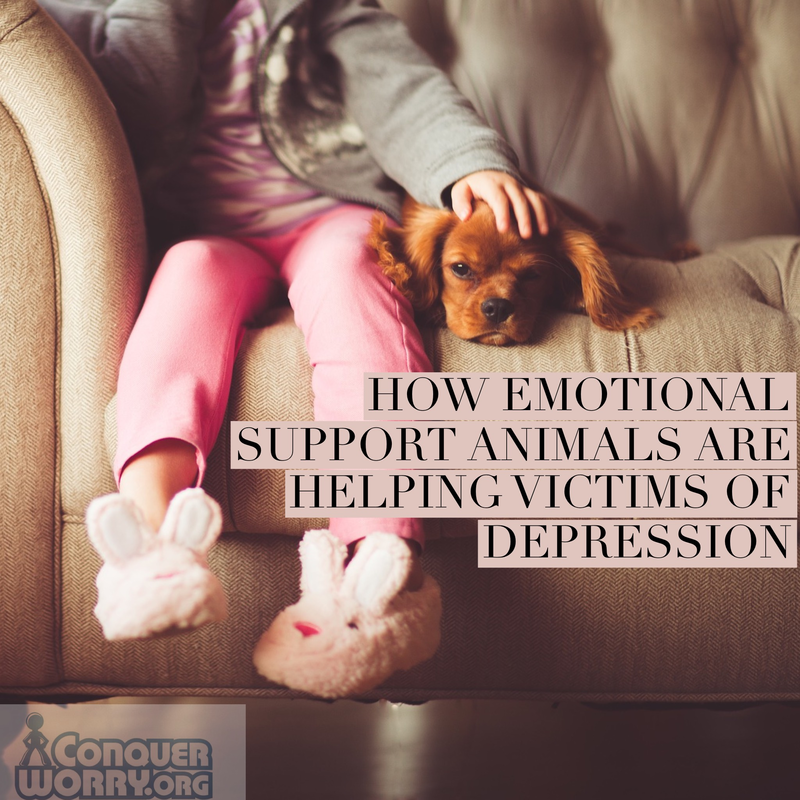
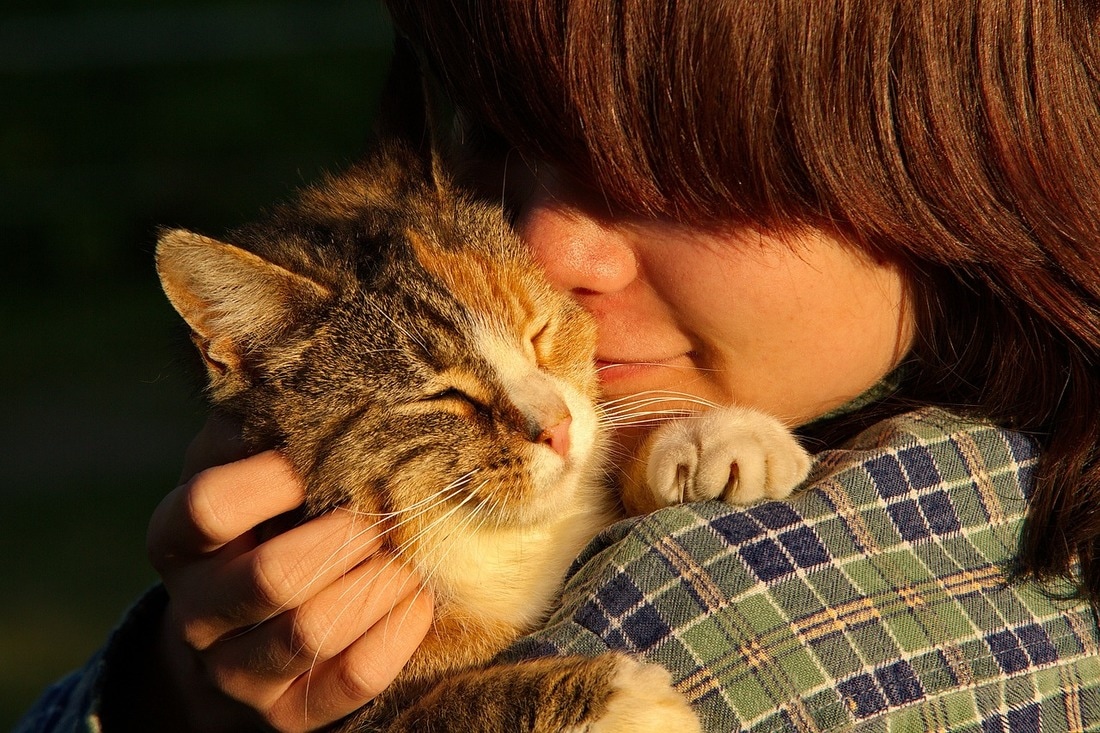
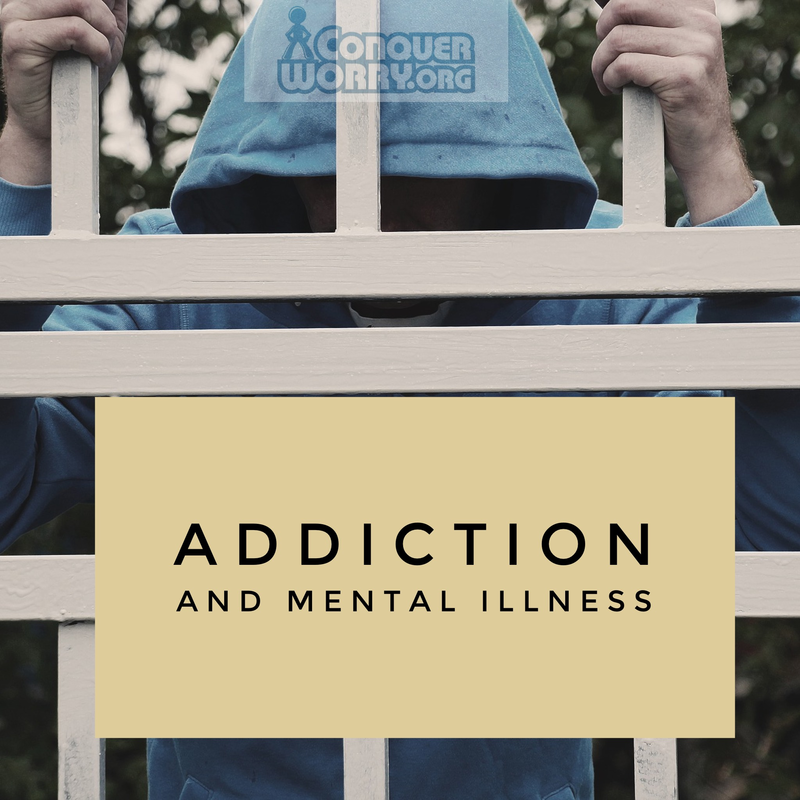

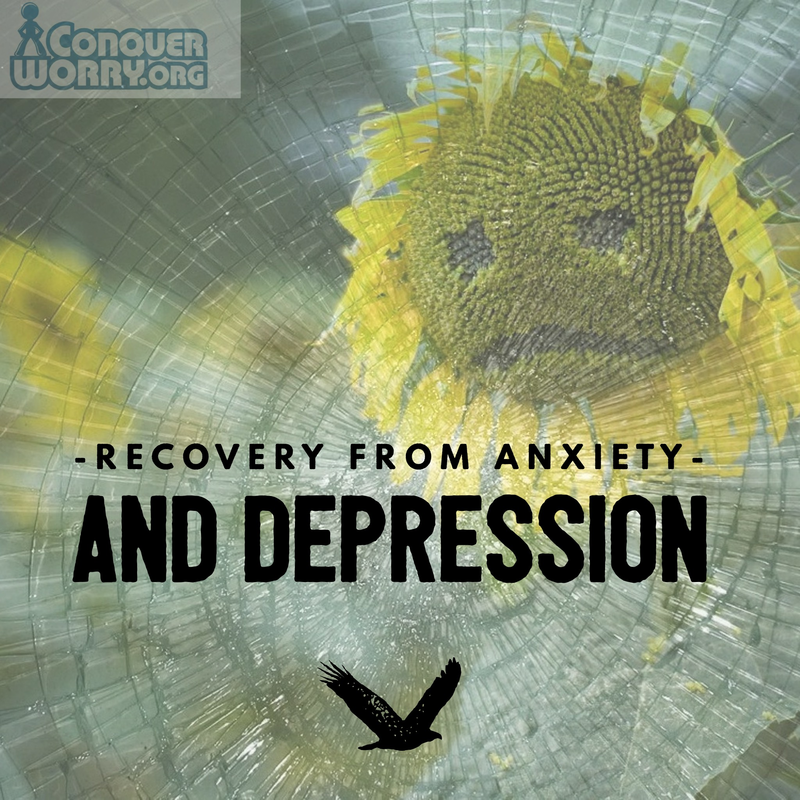

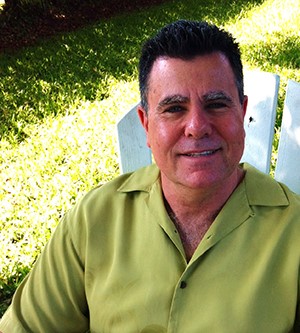
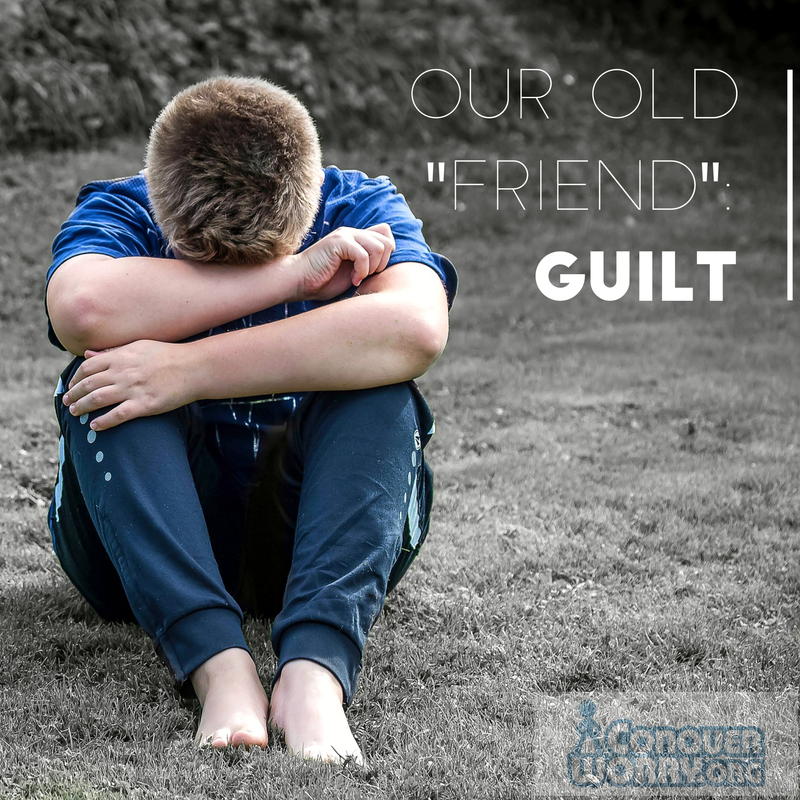
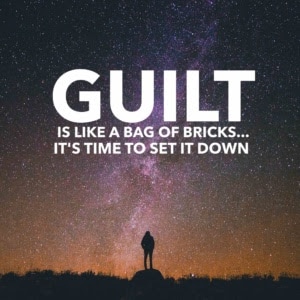


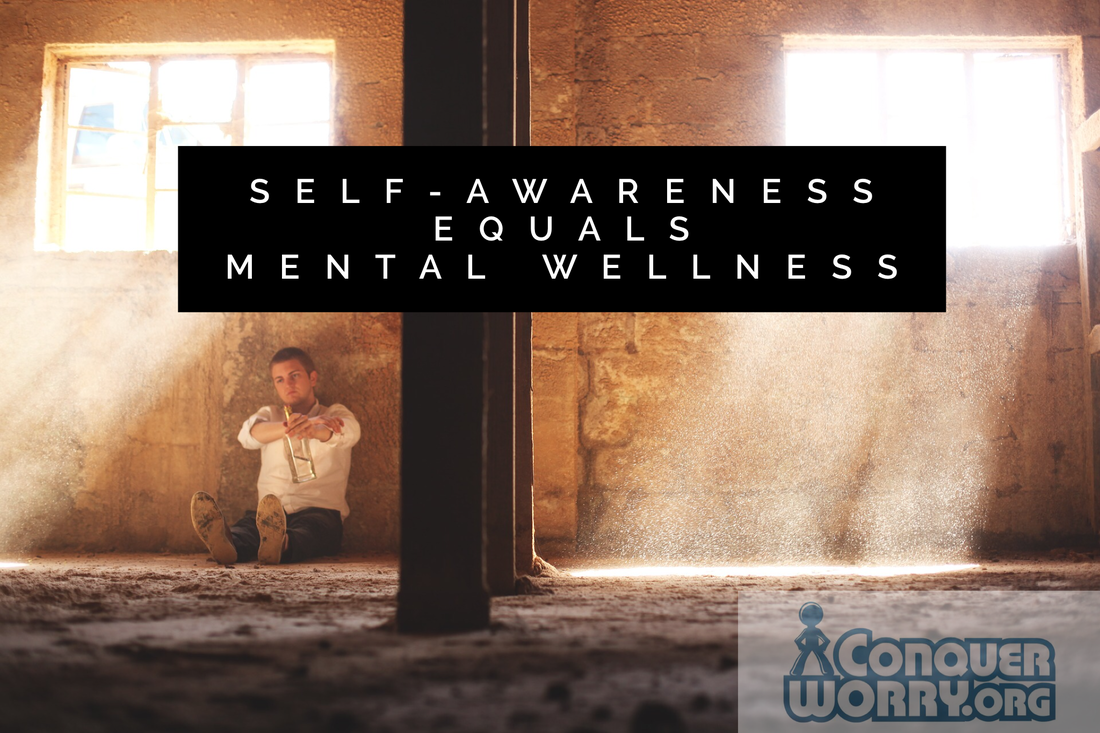
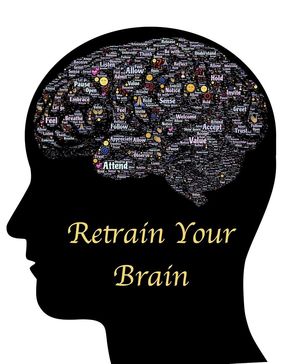

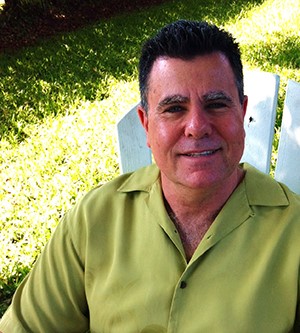

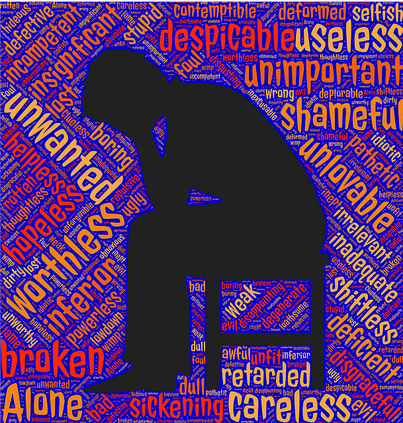


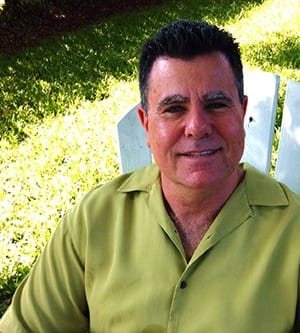



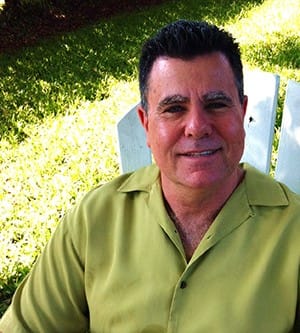
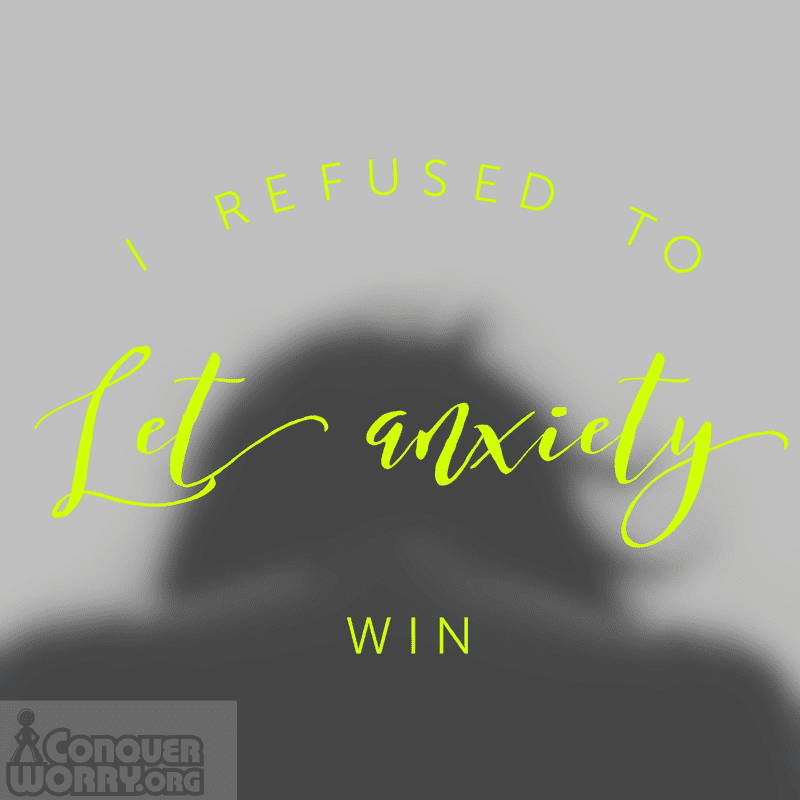





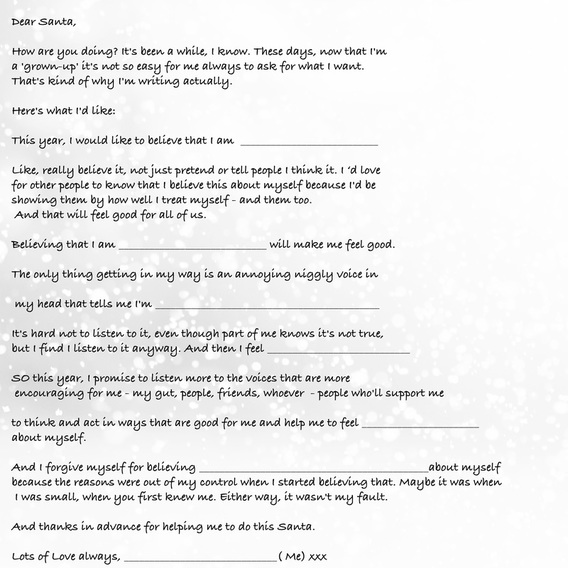

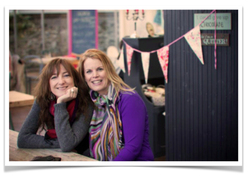



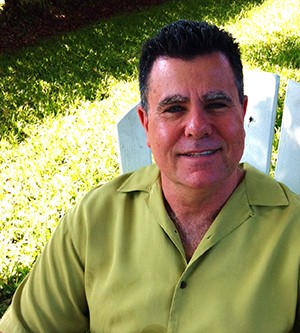

 RSS Feed
RSS Feed
